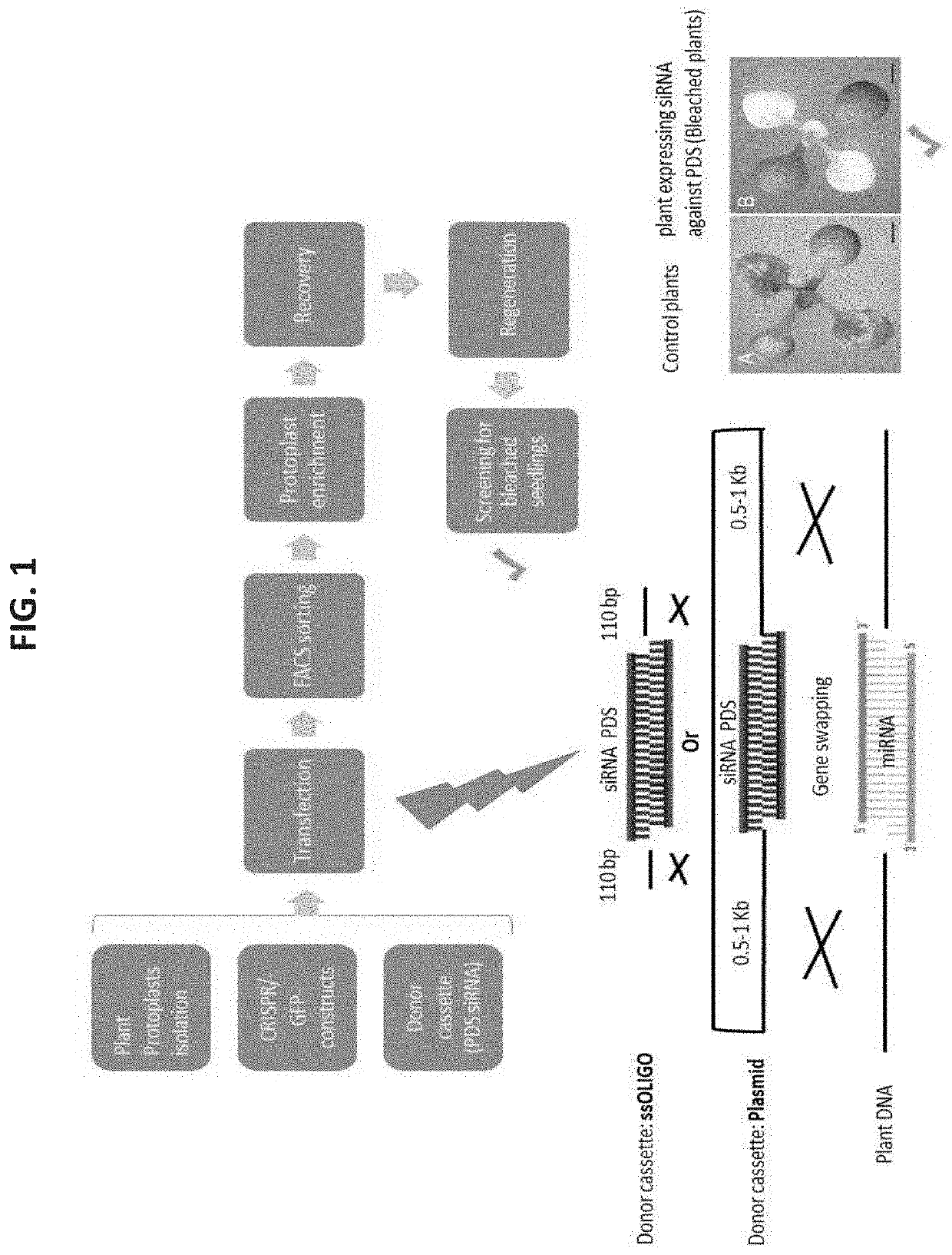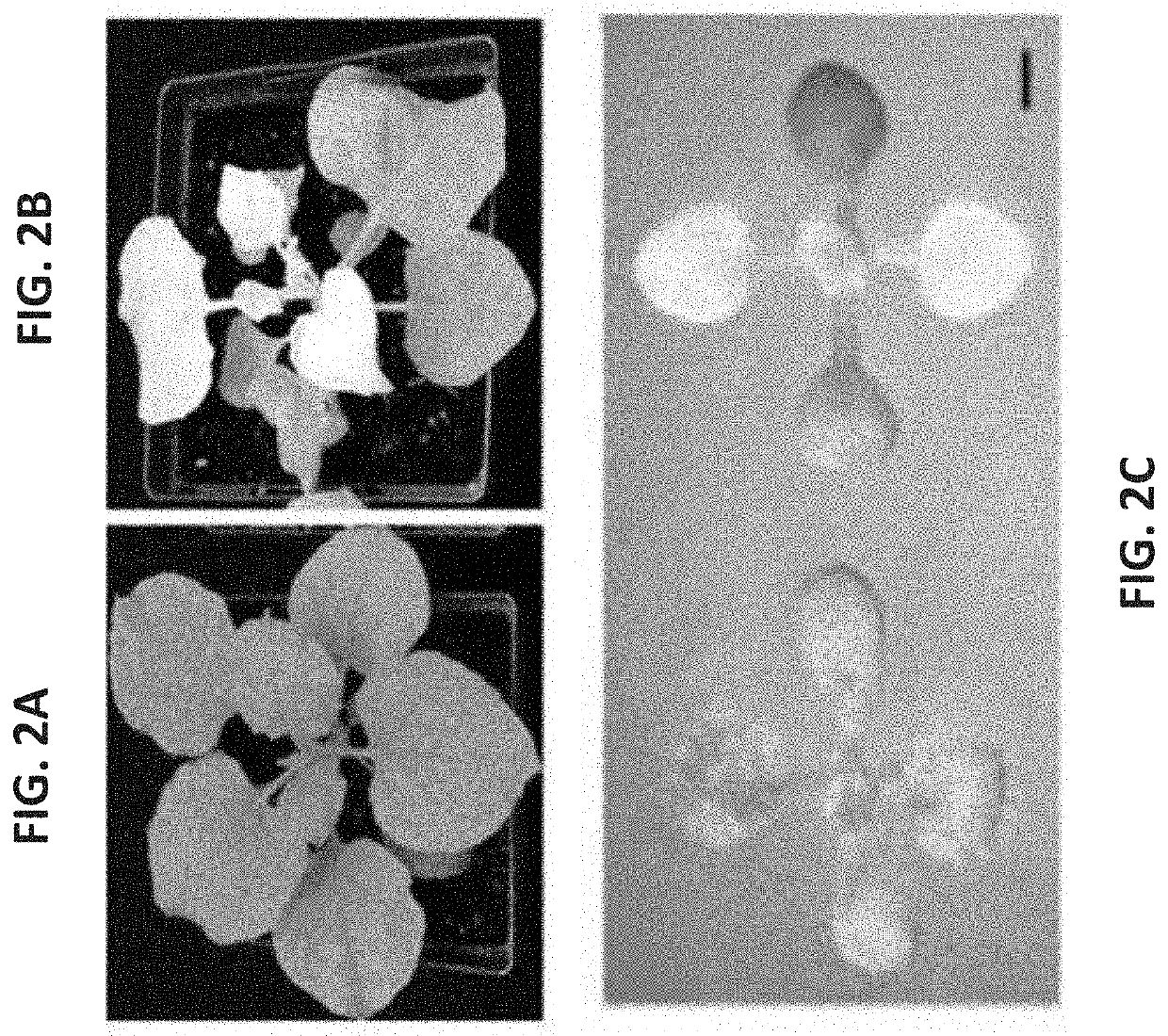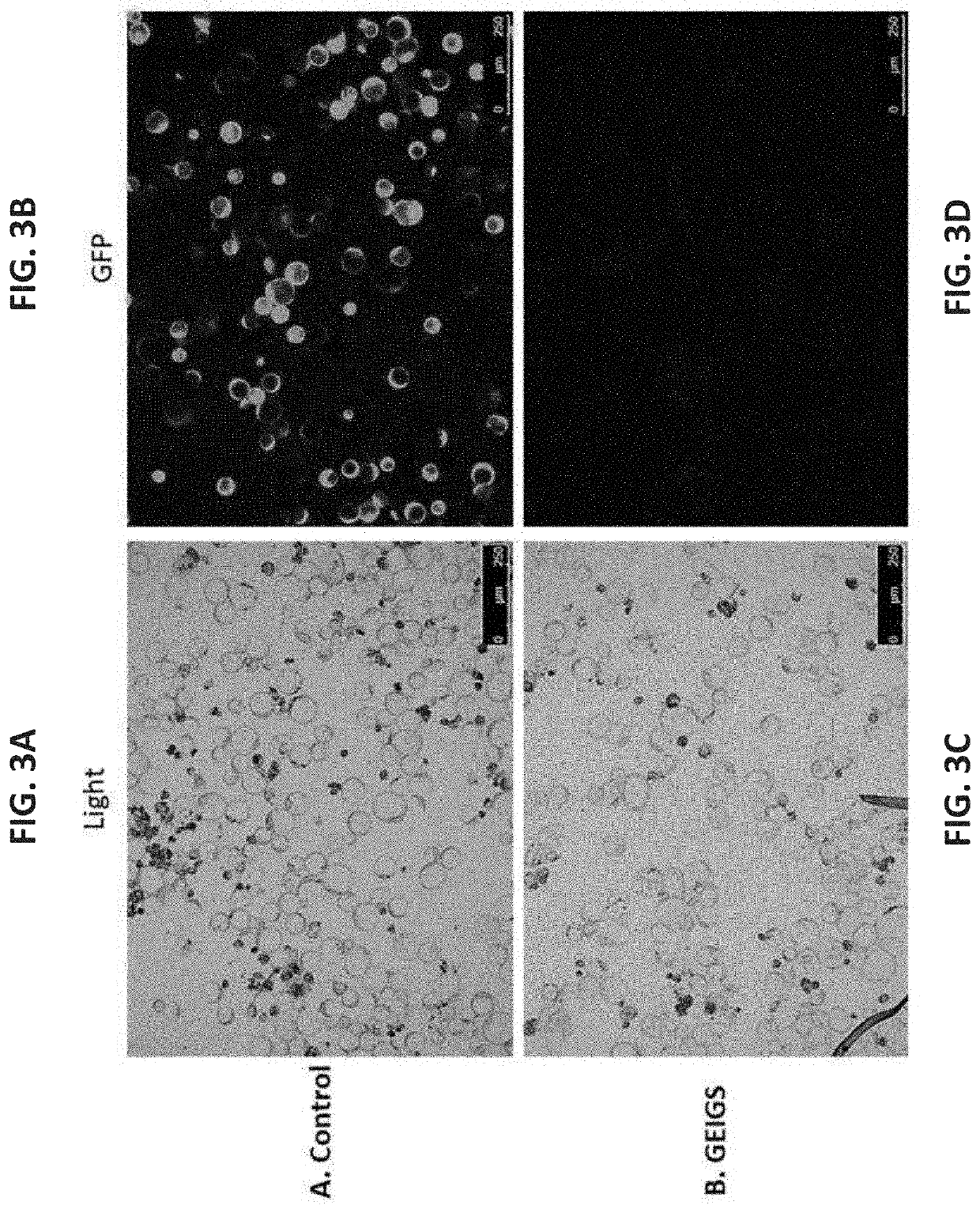Modifying the specificity of plant non-coding RNA molecules for silencing gene expression
a technology of non-coding rna molecules and specificity, applied in the field of modifying genes, can solve the problems of limited transgenic c approaches and limited approaches to achieve, and achieve the effects of reducing the expression of a target gene, and increasing stress toleran
- Summary
- Abstract
- Description
- Claims
- Application Information
AI Technical Summary
Benefits of technology
Problems solved by technology
Method used
Image
Examples
example 1a
Genome Editing Induced Gene Silencing (GEIGS)
[0703]In order to design GEiGS oligos, template non-coding RNA molecules (precursors) that are processed and give raise to derivate small silencing RNA molecules (matures) are required. Two sources of precursors and their corresponding mature sequences were used for generating GEiGS oligos. For miRNAs, sequences were obtained from the miRBase database [Kozomara, A. and Griffiths-Jones, S., Nucleic Acids Res (2014) 42: D68,ÄiD73]e tasiRNA precursors and matures were obtained from the tasiRNAdb database [Zhang, C. et al, Bioinformatics (2014) 30: 1045 ,Äi1046].
[0704]Silencing targets were chosen in a variety of host organisms (see Table 1B, above). siRNAs were designed against these targets using the siRNArules software [Holen, T., RNA (2006) 12: 1620,Äi1625.]. Each of these siRNA molecules was used to replace the mature sequences present in each precursor, generating “naive” GEiGS oligos. The structure of these naive sequences was adjusted...
example 1b
Gene Silencing of Endogenous Plant Gene—PDS
[0706]In order to establish a high-throughput screening for quantitative evaluation of endogenous gene silencing using Genome Editing Induced Gene Silencing (GEiGS), the present inventors considered several potential visual markers. The present inventors chose to focus on genes involved in pigment accumulation, such as those encoding for phytoene desaturase (PDS). Silencing of PDS causes photobleaching (FIG. 2B) which allows to use it as robust seedling screening after gene editing as proof-of-concept (POC). FIGS. 2A-C show a representative experiment with N. benthamiana and Arabidopsis plants silenced for PDS. Plants show the characteristic photobleaching phenotype observed in plants with diminished amounts of carotenoids.
[0707]In the POC experiment, choosing siRNAs was carried out as follows:
[0708]In order to initiate the RNAi machinery in Arabidopsis or Nicotiana benthamiana against the PDS gene using GEiGS application, there is a need t...
example 2
Gene Silencing of “Endogenous” Transgene GFP
[0710]Another quick and robust approach to check the efficiency of GEiGS is by silencing a transgene which is also a marker gene like GFP (green fluorescent protein). There are few easy options to assess the effectiveness of the GFP silencing in the cell, e.g. FACS analysis, PCR and microscopy. In order to show POC of GFP silencing using GEiGS, the present inventors are using a transgenic Arabidopsis or tobacco lines stably expressing GFP. Protoplasts from GFP expressing plants are used with GEiGS methodology to modify endogenous non-coding RNA e.g. miRNA to act as siRNA potent to initiate the RNA silencing mechanism targeting the GFP gene. The positive edited plants are expected to be silenced for GFP expression as illustrated in FIG. 3. Furthermore, GFP silencing in plants is well characterized and there are many available short RNA sequences (siRNA) that can be utilized to initiate GFP silencing. Therefore, for gene swapping, the presen...
PUM
 Login to View More
Login to View More Abstract
Description
Claims
Application Information
 Login to View More
Login to View More - R&D
- Intellectual Property
- Life Sciences
- Materials
- Tech Scout
- Unparalleled Data Quality
- Higher Quality Content
- 60% Fewer Hallucinations
Browse by: Latest US Patents, China's latest patents, Technical Efficacy Thesaurus, Application Domain, Technology Topic, Popular Technical Reports.
© 2025 PatSnap. All rights reserved.Legal|Privacy policy|Modern Slavery Act Transparency Statement|Sitemap|About US| Contact US: help@patsnap.com



